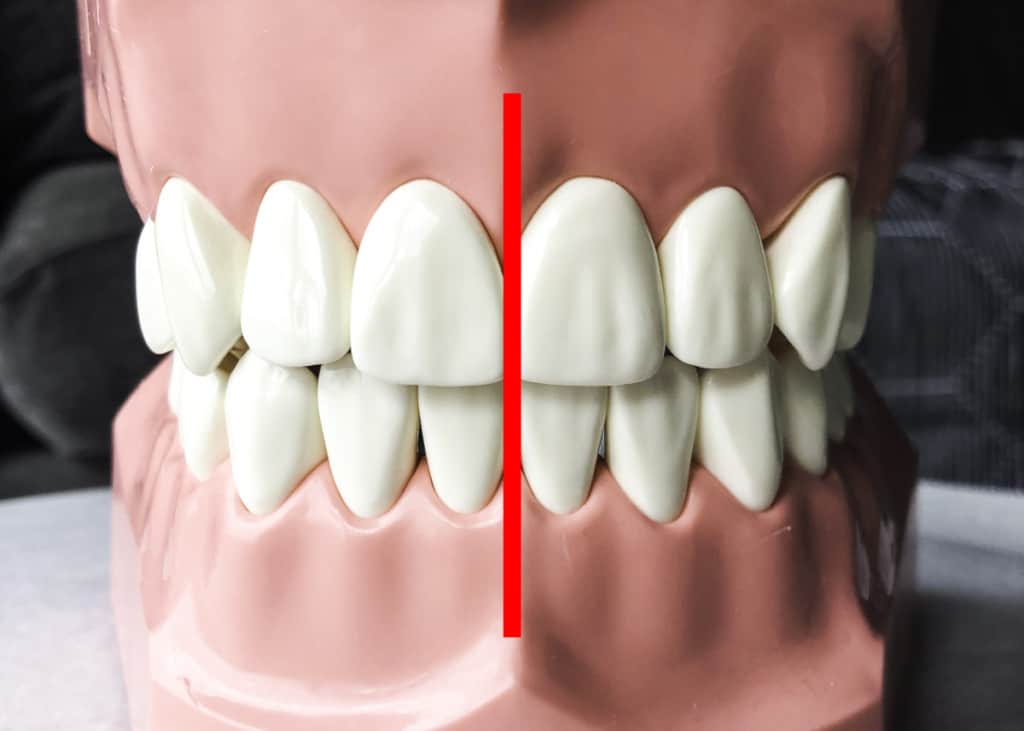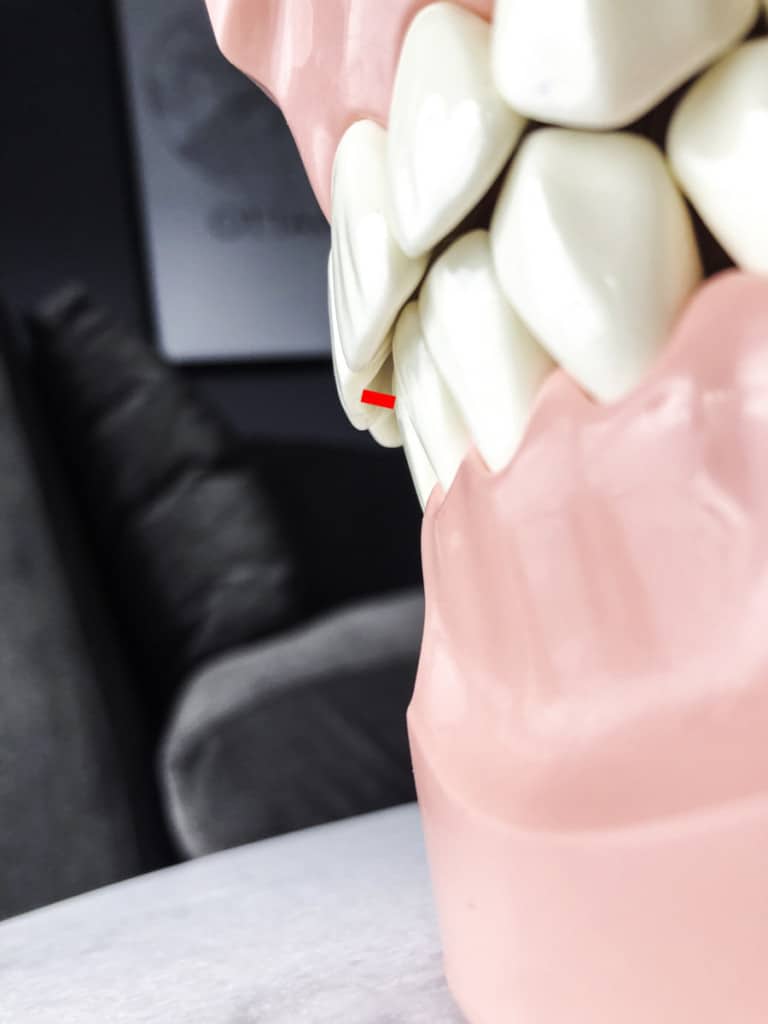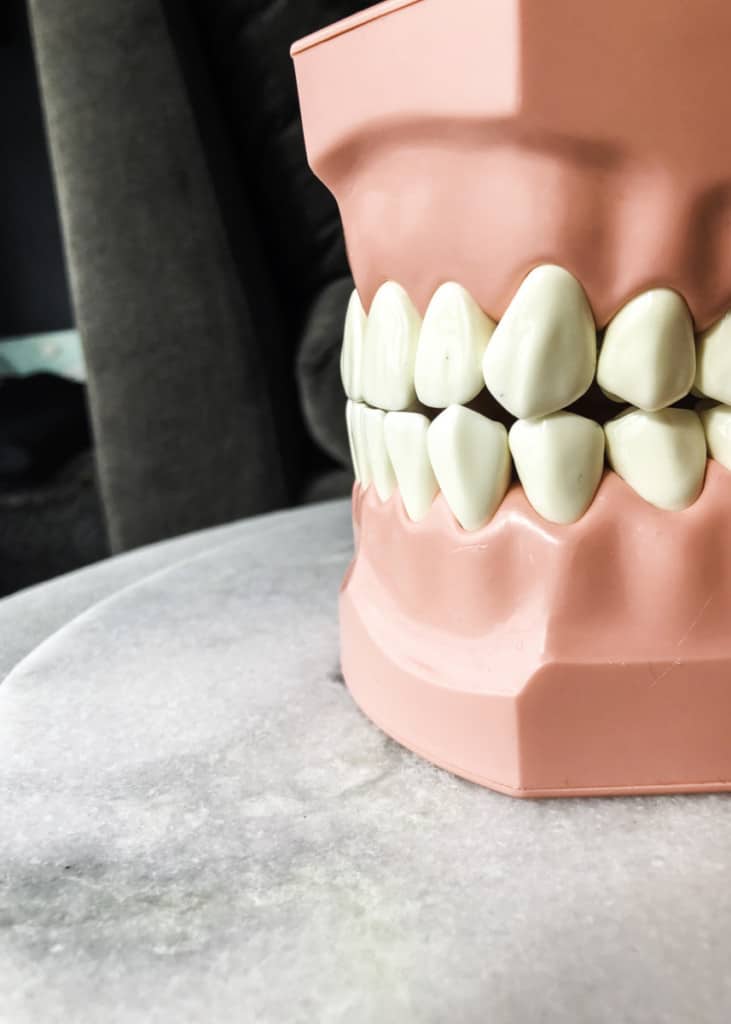
How our teeth bite together significantly impacts how we go through our lives and our appearance and is linked to our overall health. When I have patients in my dental chair, I often speak with them about their bite, mainly to prevent wear and tear to the teeth, jaw bone, jaw joints, muscles and ligaments, including how their teeth should sit when their mouth is resting.
Teeth should be a couple of millimetres apart and not touch when the mouth is resting, and the lips should touch to create a seal. Touching teeth can lead to wear and cause myofunctional issues with the mouth and jaws, including the supporting muscles and ligaments.
In this post, I cover the impact of having teeth touch together, when teeth are supposed to touch, and 11 ways how to know if your bite is off.
Why should your teeth not touch when your mouth is closed?
Dental hygiene practice is more than just cleaning teeth. We collaborate with other professionals, including orthodontists, to help our patients achieve optimal oral health through how teeth bite together.
When patients come to see me for a new patient exam, or if I haven’t seen them before, I always note how they bite their teeth together.
I even check their TMJ (temporomandibular joint) and look and feel to see how the patient will open and close their mouth. I feel for any clicks, pops, or crepitus (crackling/grating sound/sensation) and see if the patient is having difficulties opening and closing. I talk with them about any symptoms they may have been experiencing.
Below is a post I wrote about how teeth are supposed to bite together. I have included many images that help explain malocclusion and proper teeth alignment.
Read Now: Perfect Bite: How Teeth Should Line up and Come Together

When teeth are resting, the teeth mustn’t touch because it relaxes the jaw muscles and allows for proper alignment and function of the mouth and surrounding structure.
Did you know that teeth are only supposed to touch together for 4-15 minutes daily?
Teeth should only touch when swallowing or occasionally when eating. Even when eating, the food acts as a cushion between the teeth, and the teeth do not touch much when we are chewing.
If your teeth are touching more than this, either your bite is not harmonious, or you have teeth clenching or grinding habits that you may not be aware of.
I clench my teeth together a lot. It is how my body helps deal with stress and anxiety; for the longest time, it went unnoticed and unmentioned by my dentist. My dentist at the time did not explain to me the importance of wearing a nightguard and the consequences if I did not get one. He just said, “you should wear a nightguard.”
Because I didn’t have all the information, I never got a nightguard unit later when I had already worn down and chipped some of my teeth.
Below is a link to a post I wrote regarding nightguards and why choosing the wrong one can cause even more damage to your bite and smile.
Read Now: Can Nightguards Damage Teeth and Bite? Hygienist Explains
If teeth touch too much, including clenching and grinding, it can cause;
- excessive tooth wear can contribute to fractures and broken teeth
- overuse of muscles, ligaments and jaw joints, causing fatigue and pain
- headaches
- effects on breathing
- increase mouth breathing and increased risk of tooth decay
- improper tongue placement
- instability and longevity of orthodontic treatment
- impact oral health and increase bone loss around teeth
- cosmetic issues
Suppose your teeth touch too much. In that case, I recommend seeing a dental professional for a complete exam and even consulting with an orthodontist and a professional that specializes in orofacial myofunctional therapy. Here is a link to a great site explaining myofunctional therapy.
to a great site explaining myofunctional therapy.
Are your teeth supposed to touch when you smile?
Teeth are not supposed to touch when smiling. Touching teeth can indicate that how the teeth bite together is not harmonious, and malocclusion is present. Teeth should only touch when swallowing or occasionally when chewing food.
For example, if someone has an edge-to-edge bite where the teeth come together, it will be more common for the front teeth to touch together when smiling. The photo below is an example of an edge-to-edge bite.

How should front teeth fit together?
The upper front teeth should be in front of the bottom front teeth by a couple of millimetres; this is called overjet. The upper front teeth should not extend more than a couple of millimetres toward the gumline of the bottom front teeth; this is called an overbite.
An orthodontist or dentist should examine the overjet and overbite to ensure proper alignment and the teeth’ health.
How do you know if your bite is off?
There are a few ways to tell if your bite is off, and if you think it is off, you are most likely right.
Your bite could be off for many reasons, including orthodontics, having dental work done such as fillings or crowns, or an issue with your jaw joints, muscles and ligaments.
11 ways how to tell if your bite is off;
- You only eat on one side of your mouth
- Pain on one side of mouth/jaw
- Teeth only hit on one side or one tooth when biting together
- Speaking difficulty
- Clenching and grinding
- Tongue thrusting
- The midline of the top and bottom teeth do not align
- Headaches
- Loose dental work
- Uneven wear
- Tooth Sensitivity
If you think your bite is off, please see a dental professional. A minor issue now can have huge impacts many years from now. Early intervention is the cheapest therapy and will set up your mouth to be as healthy as possible for longer, contributing to overall health.
Have a great day,
Holly 🙂
